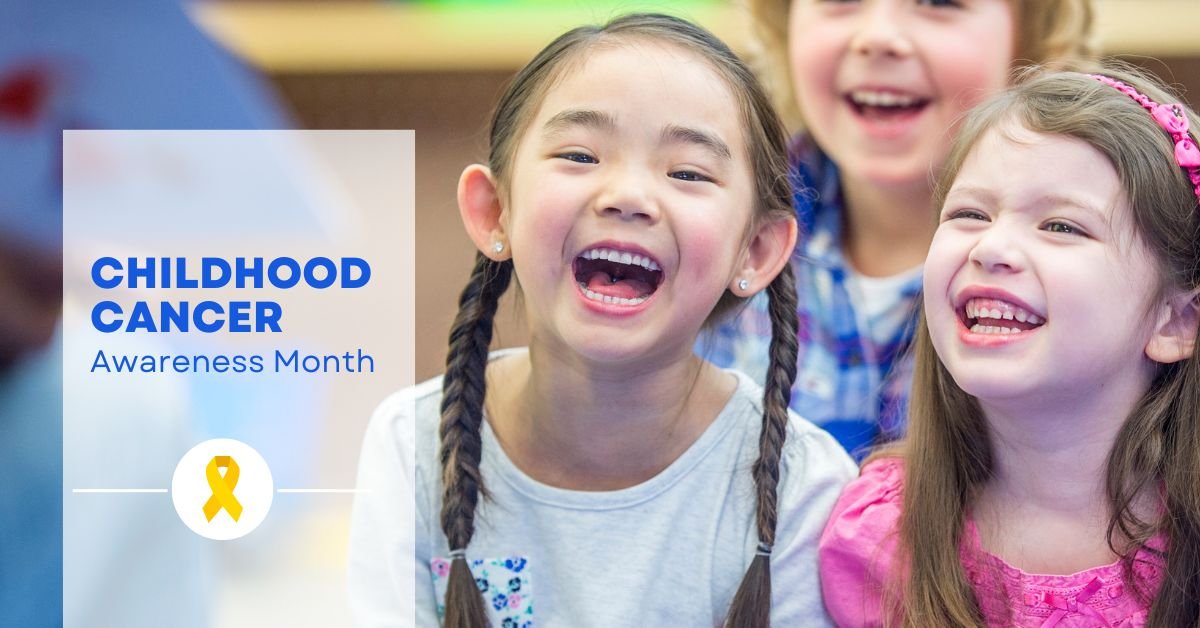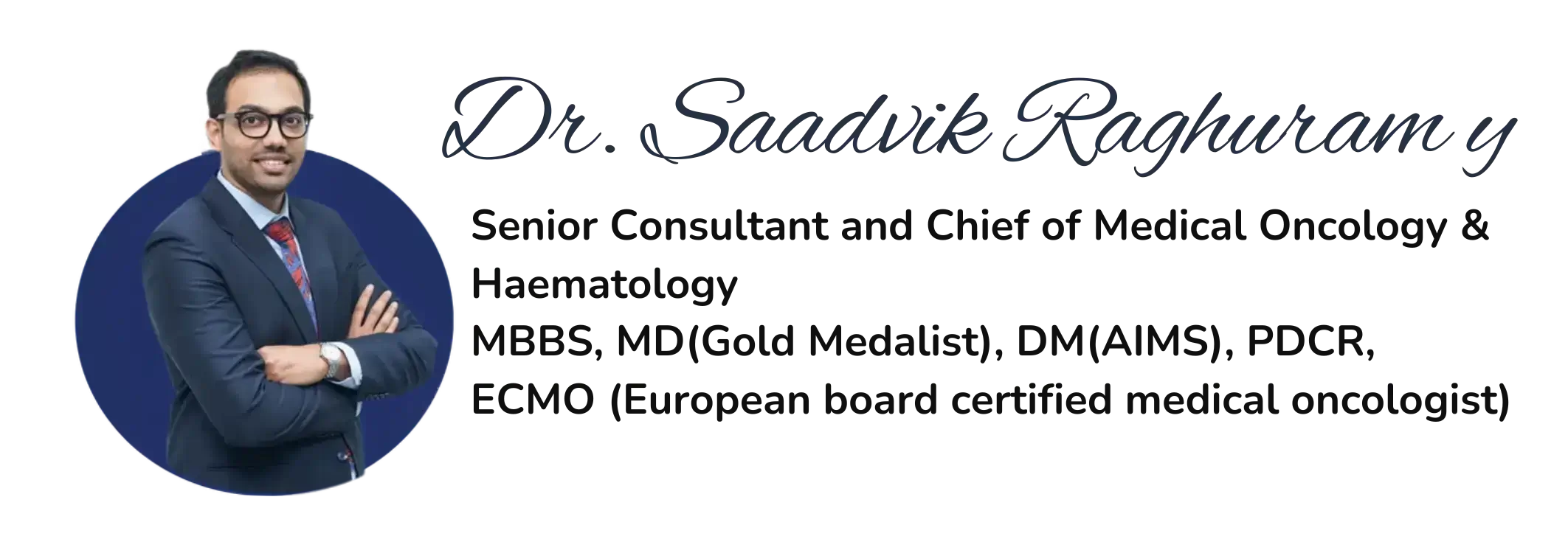
By Dr. Saadvik Raghuram, HOD Medical Oncology, Hyderabad
Why Childhood Cancer Awareness Month Matters
Childhood cancers are not rare for the families they affect—and timely referral to a specialist team changes outcomes. Globally, the WHO Global Initiative for Childhood Cancer aims to raise survival to at least 60% by 2030, potentially saving 1 million children over a decade.
In India, cancers in children (0–14 years) account for ~4% of all cancers, with lymphoid leukemia the most common childhood malignancy reported by national registries.
The Most Common Childhood Cancers
While cancer types in children differ from adults, three groups dominate the 0–14 age range:
- Leukemias (especially acute lymphoblastic leukemia, ALL)
- Brain and other central nervous system (CNS) tumors
- Lymphomas (Hodgkin and non-Hodgkin)
These patterns are consistent across global and Indian data.
Early Warning Signs Parents Shouldn’t Ignore
Children can’t always articulate symptoms, and early signs may mimic infections. Use the SILUAN checklist, developed to prompt early evaluation and referral:
- S – Seek medical help for persistent/unusual symptoms
- I – Eye changes: white reflex, new squint, vision loss, bulging eye
- L – Lump in abdomen, neck, testis, limbs, or persistent gland swelling
- U – Unexplained fever >2 weeks, weight loss, fatigue, pallor, easy bruising/bleeding
- A – Aches in bones/joints/back; easy fractures
What to do: If these signs persist beyond 1–2 weeks, do not self-medicate. Request a prompt referral to our oncology team.
How Childhood Cancers Are Diagnosed
- Clinical evaluation: history, physical exam, growth charts
- Blood tests: complete blood count, peripheral smear, relevant markers
- Imaging: ultrasound/CT/MRI; sometimes PET-CT for staging
- Tissue diagnosis: bone marrow exam (for leukemias), biopsy (for solid tumors)
- Risk stratification: incorporates age, tumor biology, minimal residual disease (MRD), and staging to tailor therapy using internationally harmonized PDQ pediatric protocols.
Modern Treatment: More Curative, More Precise
Most children receive multimodality care:
- Chemotherapy: cornerstone for leukemias and many solid tumors
- Surgery: complete, organ-preserving resections where feasible
- Radiation therapy: conformal techniques (IMRT/IGRT, stereotactic RT); proton therapy is considered for select CNS and midline tumors to limit late effects (available via referral networks in India)
- Targeted/Immunotherapies: anti-CD19/22 strategies in B-ALL trials, ALK inhibitors in neuroblastoma subsets, checkpoint inhibitors in select tumors
- Supportive care: infection prevention, transfusions, nutrition, psychosocial support
Treatment plans follow evidence-based pediatric pathways (PDQ) and are adapted to each child’s biology and risk.
The Good News: Survival Is Rising—But Survivorship Needs Care
Thanks to protocol-driven therapy and supportive care, ~85% of children in high-resource settings live ≥5 years after diagnosis. Yet many survivors face late effects—from cardiac or endocrine issues to fertility concerns and learning challenges—requiring long-term, structured follow-up.
Survivorship best practice: Create a written care plan aligned to Children’s Oncology Group (COG) Survivorship Guidelines and update it through adolescence and adulthood.
Practical FAQs for Families in Hyderabad
1) Can routine vaccines continue during chemotherapy?
Some inactivated vaccines may be given on schedule; live vaccines are typically postponed until immune recovery. Always individualize with your oncology team. (For general principles, oncologists follow national and CDC-aligned immunization precautions.)
2) Does diet “treat” cancer?
No diet cures cancer. However, medically guided nutrition improves tolerance to therapy, growth, and immunity. Work with your oncology dietitian.
3) Are all fevers emergencies?
For a child on chemotherapy, fever is an emergency. Seek care immediately—suspected febrile neutropenia needs urgent antibiotics.
4) When is a second opinion helpful?
For rare tumors, relapsed disease, or when advanced radiation (e.g., proton therapy) might reduce long-term side-effects, a second opinion and multidisciplinary tumor board review are valuable.
India & Global Context: Why Early Referral Saves Lives
- The WHO’s CureAll framework focuses on centers of excellence, standardized regimens, and robust data systems—approaches India is scaling with pediatric oncology networks to close survival gaps.
- Recent registry analyses reaffirm the national cancer burden and underscore the need for timely diagnosis and adherence to protocol-based treatment.
How We Care: Dr. Saadvik’s Oncology Philosophy
- Fast-track diagnostics: compress time from suspicion → biopsy/staging
- Evidence-based protocols: PDQ-aligned regimens and risk-adapted therapy
- Supportive care first: infection prevention, transfusion safety, fertility preservation counseling
- Family-centred care: clear communication, psychosocial support, school integration
- Survivorship plan: COG-guided follow-up, transition to adult care when appropriate
If your child has persistent warning signs, book an urgent oncology assessment. Early action saves lives.
A 10-Point Parent Checklist
- Track symptoms ≥2 weeks; use the SILUAN list.
- Get a CBC for persistent pallor, bruising, fevers.
- Insist on imaging for alarm signs (morning headaches + vomiting; new neuro deficits).
- Ask for tissue diagnosis before major surgery when feasible.
- Treat at a multidisciplinary center with pediatric oncology, surgery, radiation, and supportive care.
- Discuss clinical trials when available.
- Keep a treatment file: chemo roadmap, transfusions, toxicities.
- Learn fever pathways and when to go to ER.
- Maintain nutrition and oral care; prevent infections.
- Before therapy ends, request a survivorship plan and schedule follow-ups.
References
- WHO Global Initiative for Childhood Cancer & CureAll (survival ≥60% by 2030; 1M lives).
- Indian burden and patterns (NCRP/NCDIR; lymphoid leukemia most common in 0–14y).
- Additional India registry context (JAMA Network Open 2025).
- Common pediatric cancer types & treatment pathways (NCI PDQ).
- Late effects & survivorship (ACS overview; NCI PDQ; COG guidelines).
- Early warning SILUAN signs (CHOC; PubMed).
If you’re in Hyderabad and worried about persistent symptoms in your child, contact Dr. Saadvik Raghuram for a same-week oncology review, evidence-based treatment planning, and a comprehensive survivorship roadmap.
Disclaimer: This article is for education and should not replace medical advice. For emergencies (fever during chemotherapy, uncontrolled bleeding, breathing difficulty), seek immediate hospital care.
Cancer-Related Fatigue (CRF) is one of the most common—and most underestimated—symptoms experienced …
Every year, Aplastic Anemia Awareness Month shines a spotlight on a rare …
By Dr. Saadvik Raghuram Y Senior Consultant & Chief of Medical Oncology, …
In today’s fast-paced world, stress has almost become a way of life. …
By Dr. Saadvik Raghuram, Consultant Medical Oncologist, Hyderabad A Global Movement for …
By Dr. Saadvik Raghuram | Medical Oncologist, Hyderabad When we think of …
